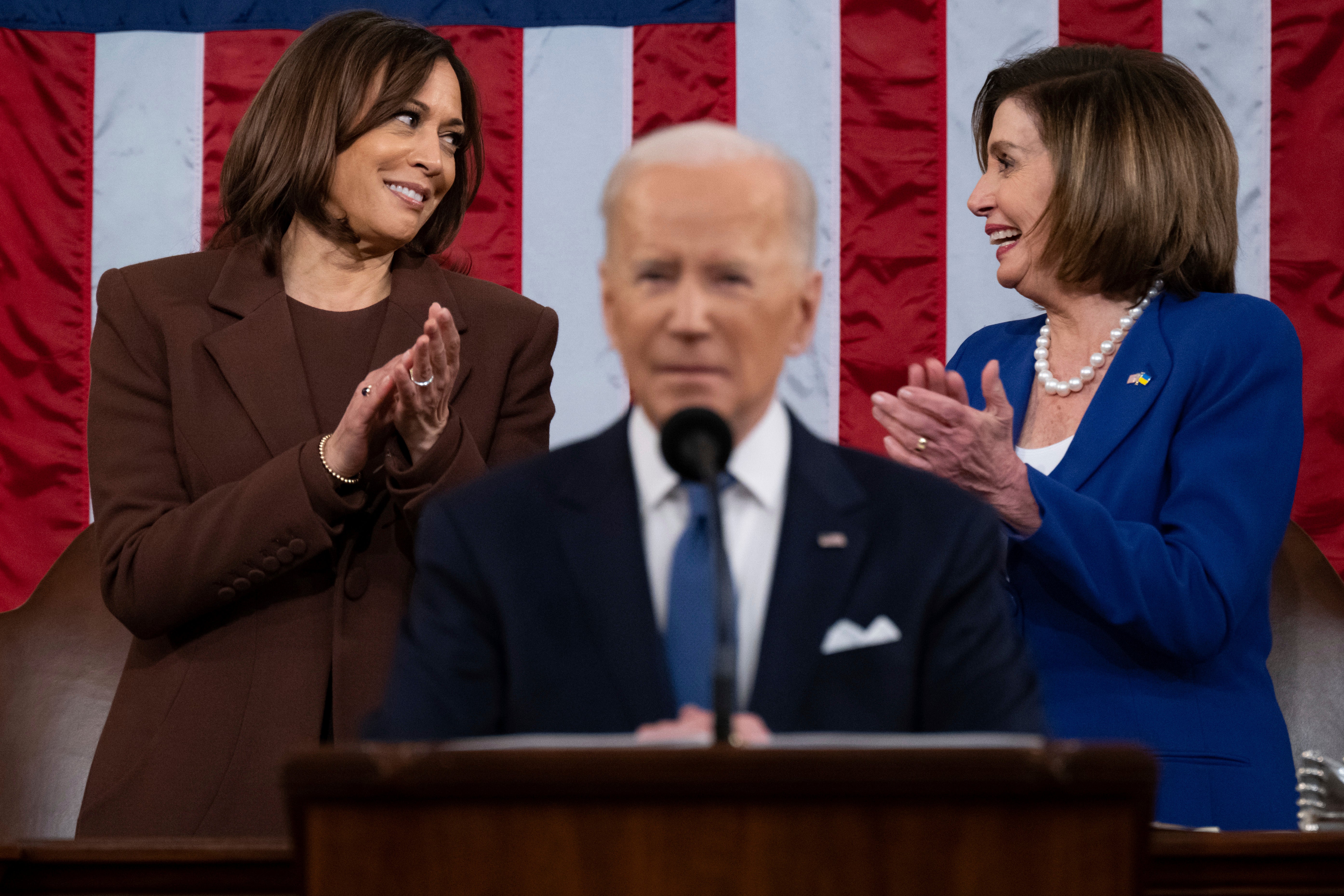Biden to deliver State of the Union address on 7 February
White House Press Secretary Karine Jean-Pierre says President Biden is looking “forward to delivering the State of the Union address on Tuesday February 7”

President Joe Biden will deliver his second official State of the Union address to a joint session of Congress on 7 February, White House Press Secretary Karine Jean-Pierre has said.
Ms Jean-Pierre told reporters last month that Mr Biden had recieved — and accepted — a “kind invitation” extended by the California Republican in a 13 January letter. By longstanding tradition, presidents only address the House on invitation from the Speaker.
“The President has accepted it and looks forward to delivering the State of the Union address on Tuesday February 7,” she said.
In a subsequent statement, Ms Jean-Pieere said Mr Biden “is grateful for and accepts Speaker McCarthy’s prompt invitation to address the peoples’ representatives in Congress”.
“He looks forward to speaking with Republicans, Democrats, and the country about how we can work together to continue building an economy that works from the bottom up and the middle out, keep boosting our competitiveness in the world, keep the American people safe, and bring the country together,” she added.
While Mr McCarthy’s invitation to Mr Biden followed a longstanding tradition, it is no mere courtesy. Although the rules adopted by the 118th Congress in January permit the US head of state entry to the House chamber (unlike the British House of Commons, which reacted to Charles I entering its’ chamber in 1642 by eventually ordering his execution), the so-called “floor privilege” afforded to current and former presidents does not extend to addressing the House.
Mr McCarthy’s invitation to Mr Biden is not all that is required to arrange the speaking opportunity, however. Before Congress can convene in the joint session, both the House and Senate must pass a concurrent resolution — setting the time, date, and purpose of such a session. It does not require the president’s signature.
The last time Congress held a formal joint session was on 1 March last year, just over two weeks after passage of a concurrent resolution to schedule the session “for the purpose of receiving such communication as the President of the United States shall be pleased to make to them”.
In his letter extending that required invitation to Mr Biden, Mr McCarthy said the American people had sent him and the new House GOP majority to Washington “to deliver a new direction for the country, to find common ground, and to debate their priorities”.
“In that spirit, it is my solemn obligation to invite you to speak before a Joint Session of Congress on Tuesday, February 7, 2023 so that you may fulfill your duty under the Constitution to report on the state of the union,” he wrote, adding that Mr Biden’s remarks “will inform our efforts to address the priorities of the American people”.
Mr Biden’s speech to Congress will be the first time he speaks to a joint session not presided over by Representative Nancy Pelosi of California, the Speaker Emerita whose Democratic Caucus held the majority in the lower chamber from 2019 until this year.
It will be the president’s third appearance before a joint session in the House chamber. His first came on 28 April 2021, the eve of his 100th day in office.
Traditionally, a president’s speech during his first year in the White House is not officially considered a “state of the union” address. Mr Biden’s first such speech was delivered on 1 March 2022.
The term “state of the union” comes from Article Two, Section 3 of the US Constitution, which states that the president “shall from time to time give to the Congress Information of the State of the Union, and recommend to their Consideration such Measures as he shall judge necessary and expedient”.
The first president to speak to a joint session was the first US President, George Washington. The third, Thomas Jefferson, considered the practice too evocative of the Speech from the Throne delivered by the British monarch during the State Opening of Parliament, and instead chose to sent a written message that was read aloud by a clerk.
The practice of an in-person address was resumed in 1913 by the 28th president, Woodrow Wilson and each subsequent president has at last once delivered the annual message in the form of a speech to a joint session, with just one exception, the 31st President, Herbert Hoover. The last president to send a written message in lieu of a speech was the 39th president, Jimmy Carter, who sent one to Capitol Hill just days before his term ended in 1981.
His successor, 40th President Ronald Reagan, began the tradition of a new president delivering a speech to a joint session in his first year, though Reagan chose not to refer to it as a “state of the union” speech.
Join our commenting forum
Join thought-provoking conversations, follow other Independent readers and see their replies
Comments
Bookmark popover
Removed from bookmarks